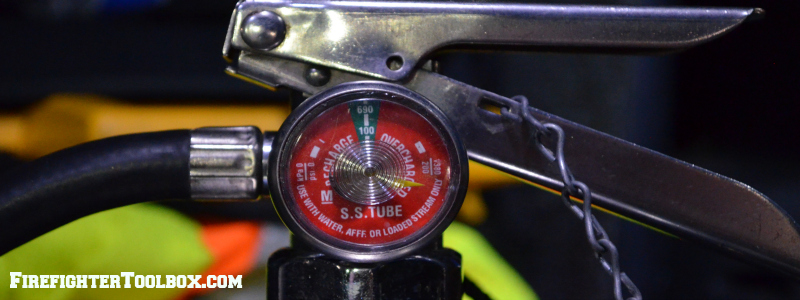How To Inspect & Maintain The Water Can
Pressurized Water Extinguisher a/k/a The PW a/k/a The Water Can

The Water Can a/k/a The Pressurized Water Extinguisher
Also known as the can, the 2-1/2 gallon water extinguisher is one of the most useful tools in the fire service. Regular inspection and maintenance is necessary to keep it that way.
Visual inspection to make sure the extinguisher is in proper working order should be done on a regular basis. Much like we do for our SCBA, it should be checked at the beginning of every tour or on a regular basis if in a volunteer department. Here is a list of some of the things to check.
Inspecting The Water Can
Step 1 – Check the pressure gauge
Is it reading in the operable area? If not, the extinguisher should be recharged or replaced with one that is ready for service.
Step 2 – Check the water
Pick up the extinguisher. Does the weight feel like there is sufficient water in it? Since water weighs 8.5 pounds per gallon, if the can does not feel like it is at least 20 pounds, it should be refilled. That extra bit of water might just be the crucial difference when you go to use it.
Step 3 – Check for damage
Examine the extinguisher for obvious signs of damage, corrosion, and leakage. Make sure the nozzle is in good condition and is not clogged. If there are any signs of damage, the can should be taken out of service immediately and replaced with one in proper working order.
Maintenance
NFPA-10 states that maintenance should be done at least once a year and more frequently if a visual inspection finds it warranted. Maintenance is a thorough inspection in order to give assurance that it will perform effectively and safely when needed. Maintenance should be performed according to manufacturer’s as well as NFPA-10 specifications. Many departments contract with a company to perform this maintenance and inspection as well as hydrostatic testing on a yearly basis.
If you have any additional tips, please leave them in the comments section!
Photos courtesy of Courtney Fling
Read additional articles on the can here!
The 2-1/2 Gallon Water Extinguisher – Uses
Taking Care Of The Can – Part 1 – Recharging
Taking Care Of The Can – Part 2 – Inspection and Maintenance
Taking Care Of The Can – Part 3 – Carrying and Modifications
Additives For The Can







